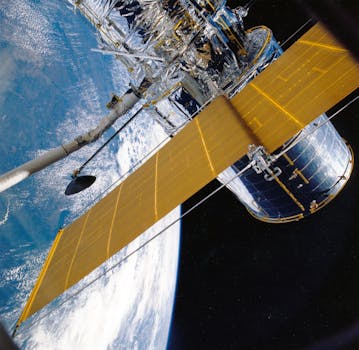Future of Satellites: Revolutionizing Global Connectivity

Future of satellites is an exciting and rapidly evolving field, with significant advancements in space technology transforming the way we communicate and access information. The future of satellites is set to revolutionize global connectivity, enabling faster and more reliable communication networks. With the increasing demand for high-speed internet and mobile connectivity, satellites will play a crucial role in shaping the future of telecommunications.
The use of satellites in telecommunications has been around for decades, but recent breakthroughs in technology have made it possible to launch smaller, more efficient, and cost-effective satellites into orbit. This has led to a surge in the number of satellite launches, with many companies and governments investing heavily in satellite technology. One of the key drivers of this growth is the need for global connectivity, particularly in remote and underserved areas where traditional fiber optic cables and cellular networks are not available.
Advancements in Satellite Technology
Several advancements in satellite technology are driving the growth of the satellite industry. One of the most significant is the development of smaller satellites, known as smallsats or cubesats. These satellites are typically weighing less than 500 kilograms and are designed to be launched into low Earth orbit, providing high-speed internet connectivity to remote and underserved areas. Smallsats are also being used for Earth observation, weather forecasting, and other applications.
Another significant advancement is the development of reusable launch vehicles, which has significantly reduced the cost of launching satellites into orbit. Companies such as SpaceX and Blue Origin are leading the charge in this area, with their reusable rockets enabling multiple launches at a fraction of the cost of traditional launch vehicles. This has made it possible for companies to launch constellations of satellites, providing global coverage and enabling a wide range of applications.
The development of advanced propulsion systems is also transforming the satellite industry. Electric propulsion systems, for example, are being used to extend the life of satellites and enable them to maintain their position in orbit for longer periods. This has significant implications for the development of satellite constellations, enabling companies to launch fewer satellites while maintaining global coverage.
The use of artificial intelligence and machine learning is also being explored in the satellite industry. AI-powered satellites can analyze vast amounts of data in real-time, enabling applications such as predictive maintenance, anomaly detection, and autonomous decision-making. This has significant implications for the development of satellite-based services, enabling companies to provide more efficient and effective solutions to their customers.
Applications of Satellites
Satellites have a wide range of applications, from telecommunications and navigation to Earth observation and weather forecasting. One of the most significant applications of satellites is in the provision of broadband internet services. Satellites can provide high-speed internet connectivity to remote and underserved areas, enabling access to information and communication services.
Satellites are also being used for navigation, with systems such as GPS and Glonass providing location information and timing signals to a wide range of applications. Satellites are also being used for Earth observation, providing high-resolution images of the Earth’s surface and enabling applications such as crop monitoring, disaster response, and environmental monitoring.
Weather forecasting is another significant application of satellites, with geostationary satellites providing images of cloud patterns and storm systems. Satellites are also being used for climate monitoring, providing data on temperature, sea level rise, and other climate-related metrics.
The use of satellites for telecommunications is also being explored, with satellites providing backup connectivity during natural disasters and other emergencies. Satellites can also provide connectivity to remote areas, enabling access to essential services such as healthcare and education.
Challenges and Opportunities
Despite the many opportunities presented by satellites, there are also several challenges that need to be addressed. One of the most significant challenges is the issue of space debris, with thousands of pieces of debris orbiting the Earth and posing a risk to operational satellites. The development of sustainable technologies and practices is essential to mitigating this risk and ensuring the long-term sustainability of the satellite industry.
Another significant challenge is the issue of regulatory frameworks, with many countries lacking clear guidelines and regulations for the launch and operation of satellites. The development of international cooperation and agreements is essential to addressing this challenge and ensuring that the benefits of satellites are shared equitably among all nations.
The issue of cybersecurity is also a significant concern, with satellites providing a potential vulnerability in the global telecommunications network. The development of secure technologies and practices is essential to mitigating this risk and ensuring the integrity of satellite-based systems.
Despite these challenges, the future of satellites presents many opportunities for growth and innovation. The development of new technologies and applications is expected to drive significant investment in the satellite industry, creating new opportunities for companies and governments to provide essential services and applications.
Conclusion
In conclusion, the future of satellites is set to revolutionize global connectivity, enabling faster and more reliable communication networks. With advancements in space technology, satellites will play a crucial role in shaping the future of telecommunications, from the provision of broadband internet services to navigation, Earth observation, and weather forecasting. While there are several challenges that need to be addressed, the opportunities presented by satellites are significant, and the development of sustainable technologies and practices will be essential to ensuring the long-term sustainability of the satellite industry.





